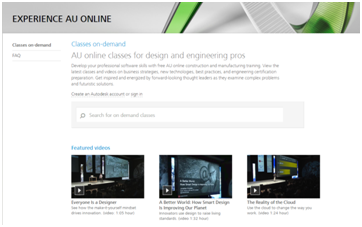Does your DoT Know Its Salt Volumes?
It’s that time of year again, winter is upon us and public works and transportation agencies are looking at ways to keep a close tab on salt supplies. Shortages are a common occurrence. Unexpected storms and unpredictable snowfall amounts can wreak havoc with salt supplies.
The Internet of Things is at Work in Our Cities this Winter
The “Internet of Things” – it’s everywhere right now!
The “Internet of Things” or IoT, for short, refers to the next evolution of the internet when everyday objects are networked to the web and each other. Smart watches, connected cars, appliances, houses, and more – very soon every physical thing will be accessible through the internet.
In government, the uses are also equally infinite - from monitoring the building energy use (currently happening over at the General Services Administration) to tracking vehicle locations and maneuvers (being explored by the DoD).
Free White Paper: DOTs Explain How They’re Transforming Transportation Infrastructure Design
According to the McKinsey Global Institute, roads are the world’s top infrastructure segment in terms of investment. Here in the U.S. increasing traffic and an aging infrastructure is making it more important than ever to build new or rehabilitate existing transportation systems. These projects are becoming increasingly larger and complex, yet funding levels have continued to drop and traditional design methods aren’t cutting it anymore.
3 Major Ways Transportation Agencies Are Using Google Solutions
When you're responsible for managing transportation infrastructure, field personnel and vehicles, having up-to-date information about locations and status is mission critical. To optimize resource coordination, central operations must be able to pinpoint infrastructure, assets, and employees. And communication channels must be strong to keep field workers and headquarters staff on the same page.
Here’s just a few ways that transportation agencies are using Google Solutions:
NCDOT and Industry Leaders Partner for Infrastructure Solutions Educational Event
If you’re a surveyor, engineer, infrastructure designer, or transportation official and are in the North Carolina area you might want to check out this one-of-a-kind all day educational event and workshop hosted at the North Carolina Department of Transportation (NCDOT) in Raleigh on December 18.
6 Free Autodesk University On-Demand Classes for Govies
6 Free Autodesk University On-Demand Classes for Govies
Can’t make it to Autodesk University (AU) this year? Anyone can join the AU community for free and enjoy on-demand classes from your desktop. Here are a few we’ve narrowed down that are specifically for and about the public sector.

CAD & GIS News for Govies 9/25
CAD News for Govies is a weekly feature on Acronym that scans thousands of industry articles to present you with a regular source of CAD and GIS news, information and ideas that impact the public sector.
Here’s the latest round-up:
SimCity with Real Data: Modeling Real Cities in 3D in a Web Environment
How to Optimize Your Road and Highway Designs Affordably with an AutoCAD Workflow
What’s Trending in Transportation Project Design?
 Some of the largest states and construction firms in the United States have begun to adopt 3D modeling software such as AutoCAD® Civil 3D® software for engineering design. Many state departments of transportation are already looking at the benefits of 3D modeling over traditional 2D programs. This trend has also begun to percolate from the national and state level down to cities and counties. DOTs and engineering consultants who have made the move to 3D have begun to explore some of the opportunities for greater efficiency, improved designs and better cost management that the use of 3D models provide. Here are some of the ways modeling software has transformed large transportation project design and development.
Some of the largest states and construction firms in the United States have begun to adopt 3D modeling software such as AutoCAD® Civil 3D® software for engineering design. Many state departments of transportation are already looking at the benefits of 3D modeling over traditional 2D programs. This trend has also begun to percolate from the national and state level down to cities and counties. DOTs and engineering consultants who have made the move to 3D have begun to explore some of the opportunities for greater efficiency, improved designs and better cost management that the use of 3D models provide. Here are some of the ways modeling software has transformed large transportation project design and development.It’s Time to Drop the Foam Board and Better Visualize Projects before they’re Built
 Ever wished you could give project teams and stakeholders a better view of what a project will look like before it’s even built? Instead of using a combination of foam board, superimposed computer graphics and aerial photographs to present a make-shift model of future projects, what if you had access to sophisticated visualization tools that can help you truly convey design intent?
Ever wished you could give project teams and stakeholders a better view of what a project will look like before it’s even built? Instead of using a combination of foam board, superimposed computer graphics and aerial photographs to present a make-shift model of future projects, what if you had access to sophisticated visualization tools that can help you truly convey design intent?